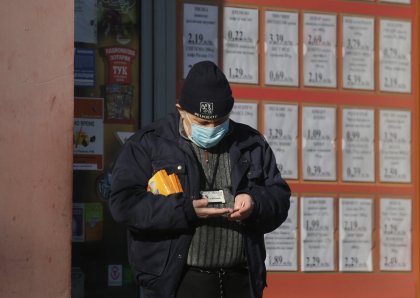32.1% of Bulgarians Were at Risk of Poverty, 1.66 Mln Were Poor in 2020

Sofia, June 21 (BTA) - In 2020, the share of Bulgarians who were
at risk of poverty or social exclusion was 32.1 per cent. The
government has set to reduce it to 31 per cent by 2022 and to 25
per cent by 2030. This is envisaged in a draft Action Plan
2021-2022 for the implementation of the National Strategy for
Reducing Poverty and Promotion of Social Inclusion 2030, which
was published for public consultation on Monday.
The plain aims to reduce the relative share of the poor from
23.8 per cent in 2020 to 22.5 per cent in 2022 and 18 per cent
in 2030.
According to the European Union Statistics on Income and Living
Conditions (EU-SILC) in 2020 the level of poverty in Bulgaria
was 23.8 per cent, or 1.660 million people. By comparison, the
relative share of the poor population grew by 1.2 per cent from
2019.
The document states that a review of data from recent years
suggests that the national goal for reducing the number of
people living in poverty by 260,000 people by 2020 has not been
fulfilled.
Between 2008 and 2020 the number of people living in poverty
increased by 28,000 people from 2008.
The plan finds that the crisis has affected to a large degree
the people who are already at the highest risk of poverty and
social exclusion and
who live in severe material deprivation such as people with low
education and skills, young people in insecure jobs, the
elderly, people with disabilities, the self-employed, low-paid
workers and disadvantaged families with children.
In 2020, in terms of economic status the risk of poverty was
highest for the unemployed, 61.1 per cent compared with 58.9 per
cent in 2019, pensioners, 37.7 per cent compared with 34.4 per
cent in 2019, and for other economically inactive people, 35.5
per cent compared with 29.8 per cent in 2019.
Poverty assessment based on the type of household suggests that
the highest increase in the risk of poverty in 2020 compared
with 2019 was observed in single-member households with people
aged over 65 - by 4.9 percentage points (61.8 per cent in 2020
and 56.9 per cent in 2019).
In 2021, GDP is expected to grow by 2.5 per cent. Household
consumption will recover and will exceed the 2019 levels,
supported by the rise in employment and available income. In
2022 GDP growth will accelerate to 3 per cent and to 3.2 per
cent in 2023. The improved consumer confidence and income growth
will drive up private consumption. In 2023 public investments
are projected to grow because the 2014-2020 period for
absorption EU funds is ending and because of the expectations
for the completion of infrastructure projects.
In 2020 the average annual unemployment level increased to 7.4
per cent, up by 1.8 percentage points compared with the previous
year.
In 2021, employment is expected to recover slightly and will
continue to increase in 2022 but it won't return to 2019 levels.
The improvement in external conditions and economic activity
recovery will translate into a gradual decline of the
unemployment rate by between 0.2 and 0.6 percentage points
yearly in 2021 and 2022. NV/PP



 EUR 1.9558
EUR 1.9558
 USD 1.7284
USD 1.7284
 CHF 1.8677
CHF 1.8677